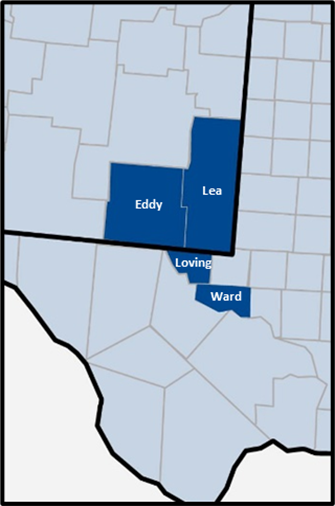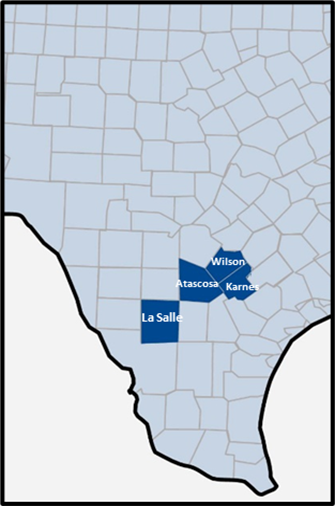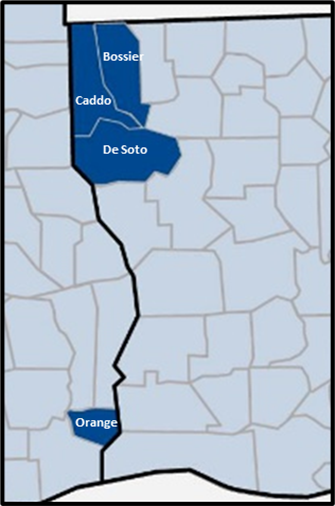Welcome to Matador Resources
Company Profile
Matador is an independent energy company engaged in the exploration, development, production and acquisition of oil and natural gas resources in the United States, with an emphasis on oil and natural gas shale and other unconventional plays. Its current operations are focused primarily on the oil and liquids-rich portion of the Wolfcamp and Bone Spring plays in the Delaware Basin in Southeast New Mexico and West Texas. Matador also operates in the Eagle Ford shale play in South Texas and the Haynesville shale and Cotton Valley plays in Northwest Louisiana.
Additionally, Matador conducts midstream operations in support of its exploration, development and production operations and provides natural gas processing, oil transportation services, natural gas, oil and produced water gathering services and produced water disposal services to third parties.
Operational Areas
Matador Resources Company’s focus is to create a risk balanced portfolio of exploration opportunities for oil and natural gas in unconventional resource plays, supplemented with exploration for more conventional targets. We concentrate our exploration efforts primarily on known hydrocarbon-producing areas with well-established production histories offering the potential for multiple-zone completions. Our current operations are focused primarily on the oil and liquids-rich portion of the Wolfcamp and Bone Spring plays in the Delaware Basin in Southeast New Mexico and West Texas. We also operate in the Eagle Ford shale play in South Texas and the Haynesville shale and Cotton Valley plays in Northwest Louisiana.
Operations

Southeast New Mexico and West Texas
Delaware Basin
The Permian Basin in Southeast New Mexico and West Texas is a mature exploration and production province with extensive developments in a wide variety of petroleum systems resulting in stacked target horizons in many areas. Historically, the majority of development in this basin has focused on relatively conventional reservoir targets, but the combination of advanced formation evaluation, 3-D seismic technology, horizontal drilling and hydraulic fracturing technology is enhancing the development potential of this basin, particularly in the organic rich shales, or source rocks, of the Wolfcamp and in the low permeability sand and carbonate reservoirs of the Bone Spring, Avalon and Delaware formations. We believe these formations, which have been typically considered to be low quality rocks because of their low permeability, are strong candidates for horizontal drilling and intense hydraulic fracturing techniques.
Read more
South Texas
EAGLE FORD SHALE AND OTHER FORMATIONS
The Eagle Ford shale extends across portions of South Texas from the Mexican border into East Texas forming a band roughly 50 to 100 miles wide and 400 miles long. The Eagle Ford Shale is organically rich, calcareous shale, in places transitioning to an organic, argillaceous lime-mudstone. It lies between the deeper Buda limestone and the shallower Austin Chalk formation. Most, if not all, of the oil found in the Austin Chalk and Buda formations is generally believed to be sourced from the Eagle Ford shale. In the prospective areas for the Eagle Ford shale, the interval averages 200 feet thick, is found at depths ranging from as shallow as 4,000 feet to as deep as 13,000 feet, and in much of the deeper portions of the play is over-pressured. The Eagle Ford shale has a total organic carbon content of 1% to 7% that is comparable to the Haynesville shale, and is generally porous, with core-measured porosities ranging between 4% and 14%.
Read more
Northwest Louisiana
HAYNESVILLE SHALE, COTTON VALLEY AND OTHER FORMATIONS
The Haynesville shale is an organically rich, over-pressured marine shale found below the Cotton Valley and Bossier formations and above the Smackover formation at depths ranging from 10,500 to 13,500 feet across a broad region throughout Northwest Louisiana and East Texas, including Bossier, Caddo, DeSoto and Red River Parishes in Louisiana and Harrison, Rusk, Panola and Shelby Counties in Texas. The Haynesville shale has a typical thickness ranging from 100 to 300 feet. Total organic carbon ranges from 0.5% to 5.0%, with core-measured porosities from 3% to 15%. The Haynesville shale produces primarily dry natural gas with almost no associated liquids.
Read more

















